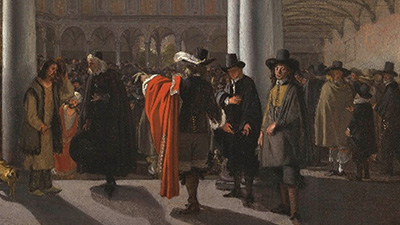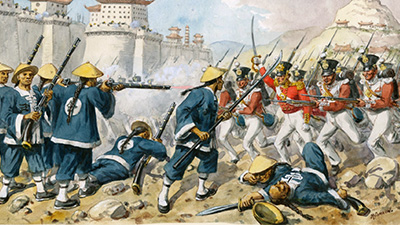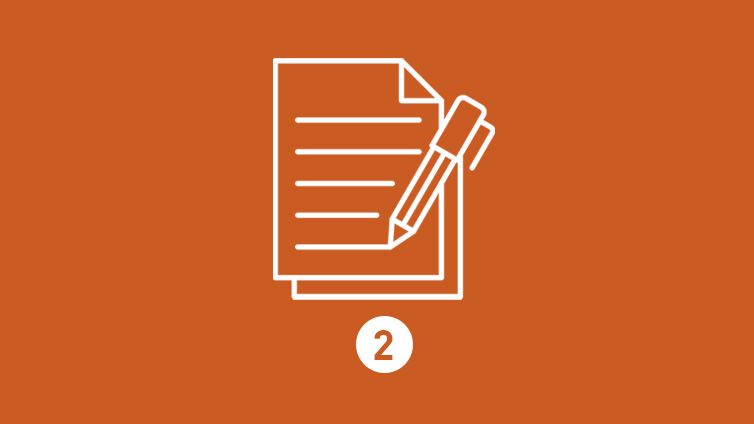The Business of Empire
Teacher Resources
Driving Question: How did the development of new economic systems and new oceanic empires support each other?
The expansion of overseas empires changed European economic systems. In turn, these new economic systems helped Europeans operate empires like businesses. In this lesson, you’ll learn about the rise of capitalism and how this economic system helped finance imperialist ventures.
Learning Objectives:
- Understand why new economic systems and innovations emerged during this period.
- Evaluate the interactions between European empires and new economic systems.
- Use the historical thinking practice of continuity and change over time to assess the impact of transoceanic connections.
Vocab Terms:
- capitalist
- cash crop
- credit
- currency
- laissez-faire
- mercantilism
- middle class
- profit
Opener: The Business of Empire
To teach this lesson step, refer to page 2 of the Lesson 3.9 Teaching Guide.
What has changed? What has stayed the same? Later in this lesson, you’ll consider these questions to review what you’ve learned over the last two units. First, get comfortable with this this way of thinking, which is called continuity and change over time (CCOT).
The Global Silver Trade
To teach this lesson step, refer to page 4 of the Lesson 3.9 Teaching Guide.
The Spanish Empire extracted huge amounts of silver from their colonies in the Americas. The sudden abundance of this precious metal totally reshaped global economic patterns.
-
Guiding Questions
-
Before you watch
Preview the questions below, and then review the transcript.
While you watch
Look for answers to these questions:
- What are some aspects of Inca society that strengthened their empire?
- What resource did the Spanish find instead of gold, and how did they extract this resource?
- What were the economic results of Spanish silver mining in the Americas?
- What other country had a problem with inflation? How did they try to deal with it, and were they successful?
- What were some effects of China’s new tax structure in the sixteenth century?
After you watch
Respond to this question: What were the overall global effects of Spanish silver mining?
The Spanish went looking for gold in the Americas, but they actually found silver. Unfortunately, all that silver led to death, inflation, and other not-so-good things.
Key Ideas
Capitalism and Empire
To teach this lesson step, refer to page 5 of the Lesson 3.9 Teaching Guide.
Want some additional resources to use when teaching Our Interconnected World? Check out this conversation in the OER Project Teacher Community.
The emerging system of capitalism supported the expansion of European empires—just as those empires helped expand the system of capitalism. These articles and activity will help you see the global connections that made it all possible.
-
Guiding Questions
-
Before you read
Preview the questions below, and then skim the article. Be sure to look at the section headings and any images.
While you read
Look for answers to these questions:
- In what ways was the European use of credit in this period a continuation of older practices? In what ways was it a change?
- What was the impact of Fibonacci’s book?
- Why was a bill of exchange useful?
- What financial innovation did the British East India Company and Dutch East India Company rely on?
- What was the economic role of colonies for Europeans in this era?
After you read
Respond to these questions: We tend to think that exchange and trade between societies is always a good thing. Does this article change your opinion? How?
-
Guiding Questions
-
Before you read
Preview the questions below, and then skim the article. Be sure to look at the section headings and any images.
While you read
Look for answers to these questions:
- What was the East India Company and when did it start operating?
- Why did the EIC get so powerful in India?
- What strategies did the company use to rule India?
- Why did the company begin to decline and collapse?
- What policies of the EIC helped spark the 1857 uprising?
After you read
Respond to these questions: What do you think is the legacy of the EIC? Was it a pioneering corporation? Or were they merely pirates and criminals?
Continuity and Change Over Time: Transoceanic Connections
To teach this lesson step, refer to page 11 of the Lesson 3.9 Teaching Guide.
Want to know more about OER Project’s approach to CCOT? Take a look at this one-pager.
We’ve already discussed the importance of understanding how things change—or don’t change—over time. In this activity, you’ll get to practice this skill.
Closer: The Business of Empire
To teach this lesson step, refer to page 13 of the Lesson 3.9 Teaching Guide.
In this unit, you’ve learned about how the world transformed as a result of new global connections. Now, it’s time to reflect on how what you’ve learned has changed what you think.
The Dutch East India Company
To teach this lesson step, refer to page 14 of the Lesson 3.9 Teaching Guide.
Sometimes, to be successful you have to think outside of the box. That’s exactly what the Dutch East India Company did to dominate the spice trade in Southeast Asia.
-
Guiding Questions
-
Before you watch
Preview the questions below, and then review the transcript.
While you watch
Look for answers to these questions:
- What was the VOC and why was it formed? What powers did it have?
- Why was it easy for Dutch citizens to invest?
- What were some important financial technologies used by the Dutch?
- What key advantage did the VOC have over British companies?
- How did the Dutch control trade in Southeast Asia?
- What caused the VOC to decline and eventually go bankrupt?
After you watch
Respond to this question: Does the example of the VOC support or contradict the argument that capitalism was the main system supporting European empires in this period?
For a time, the Dutch East India company dominated the spice trade in southeast Asia, using some clever financial innovations. But was this capitalism or something else?





